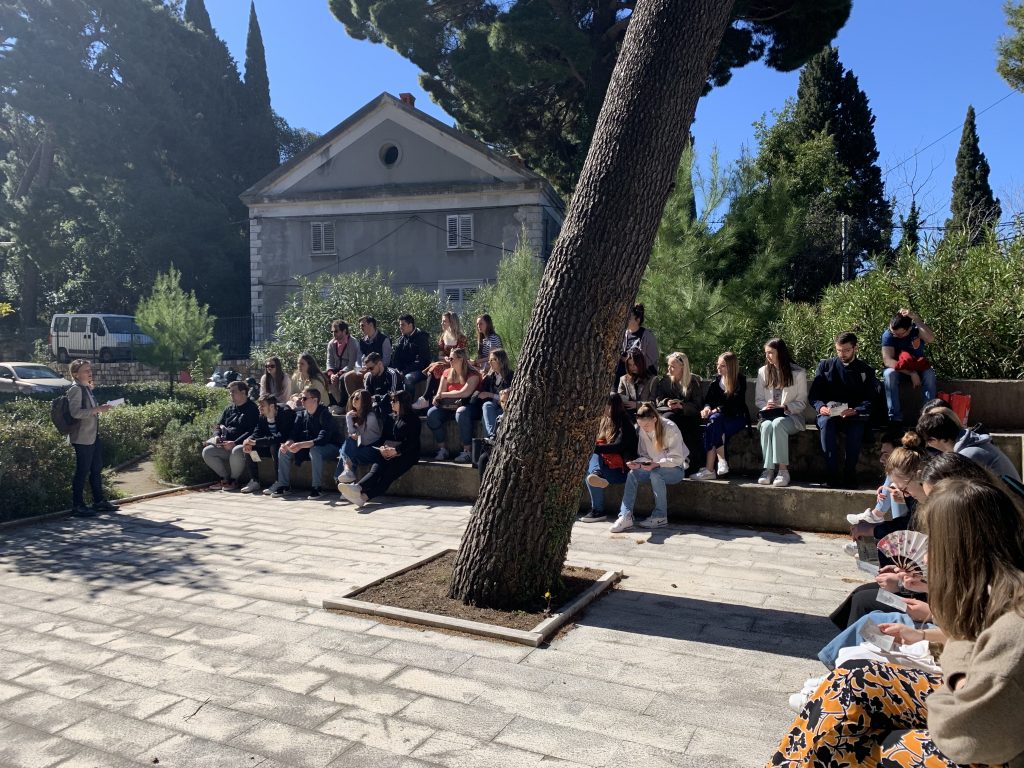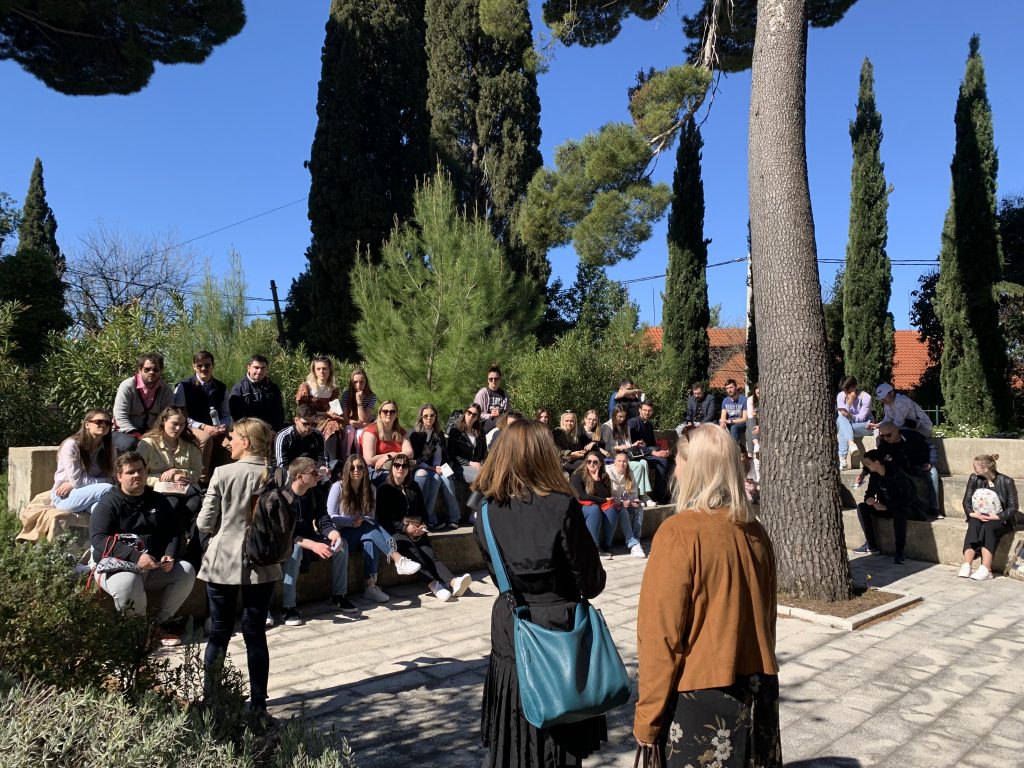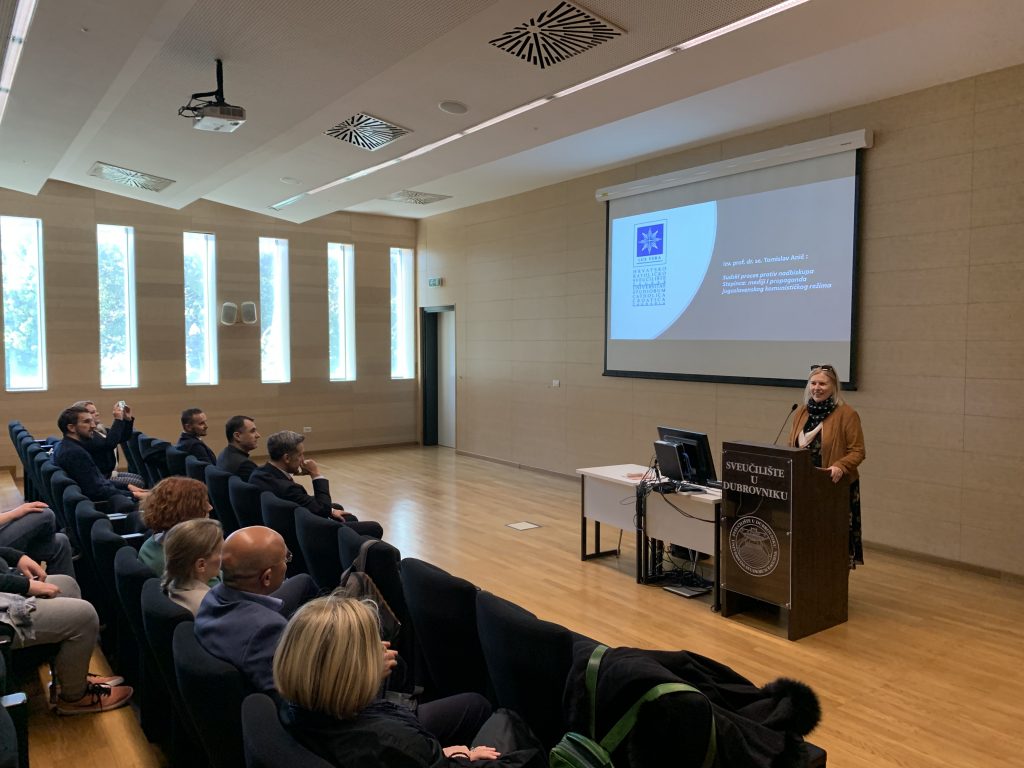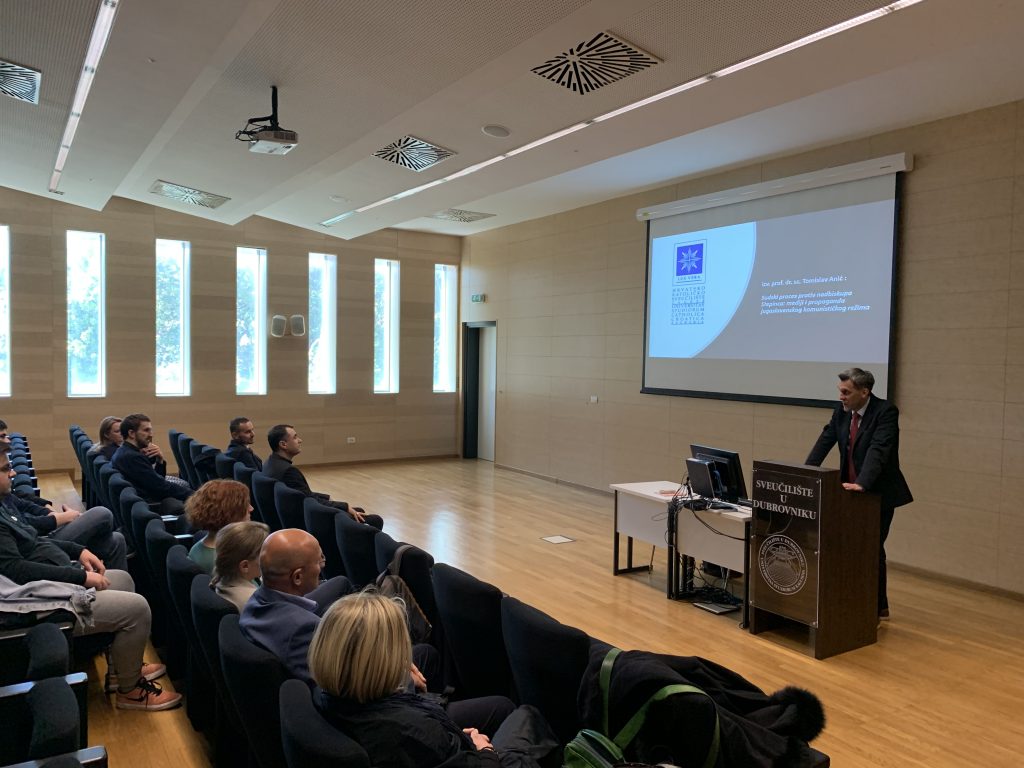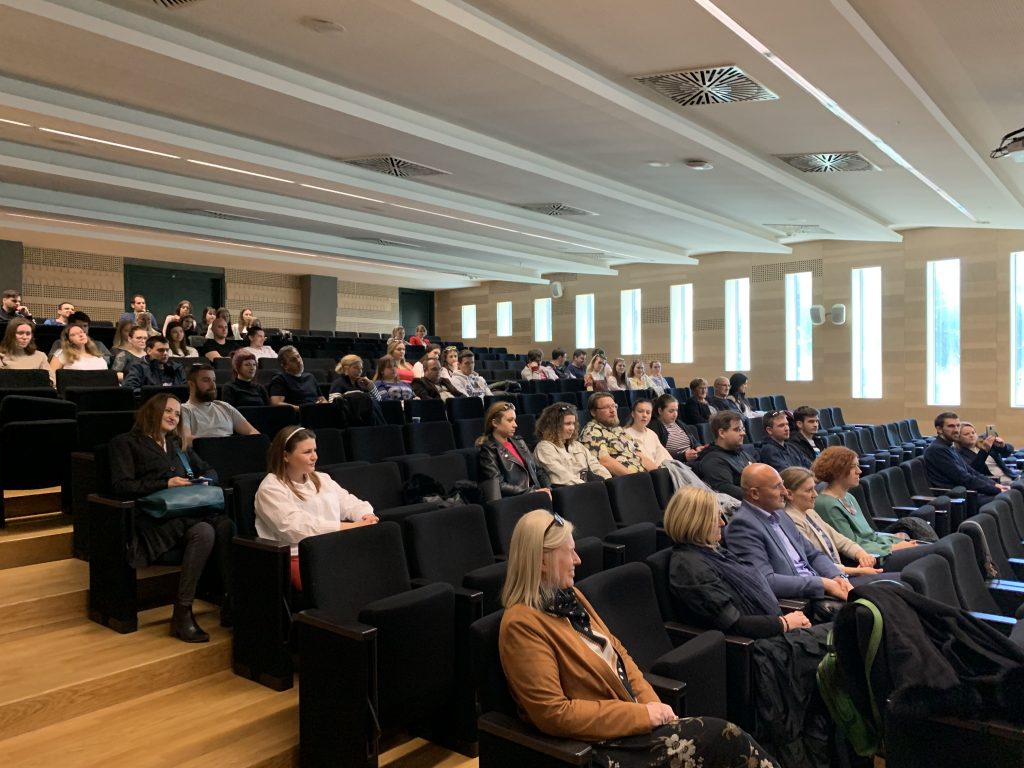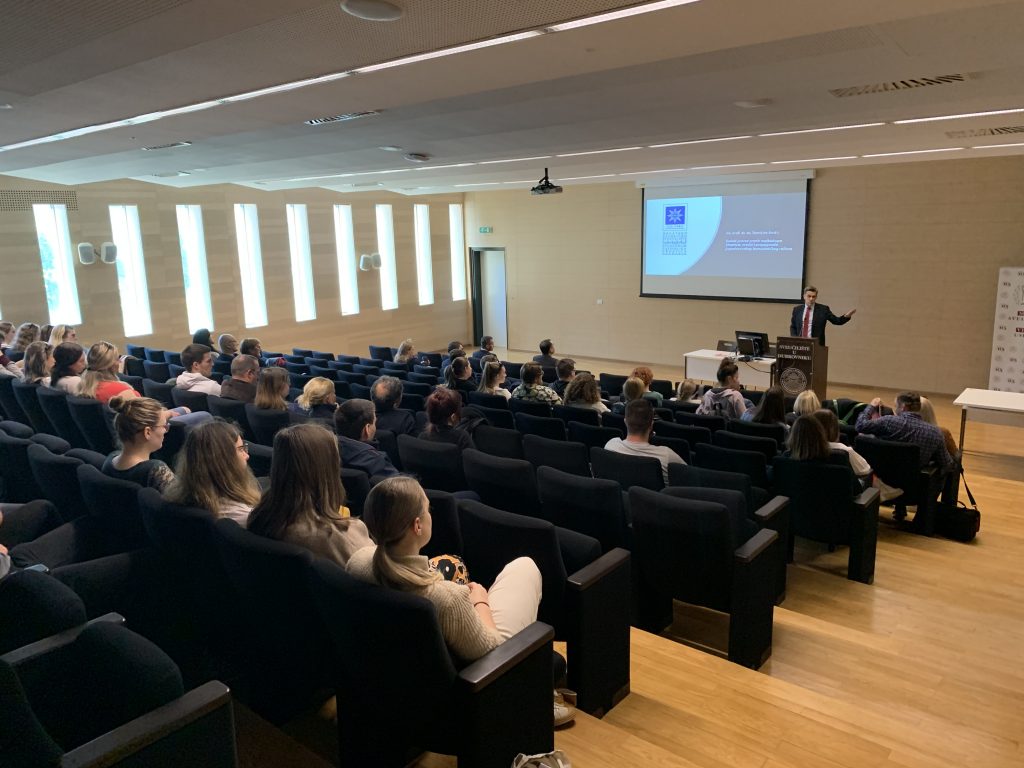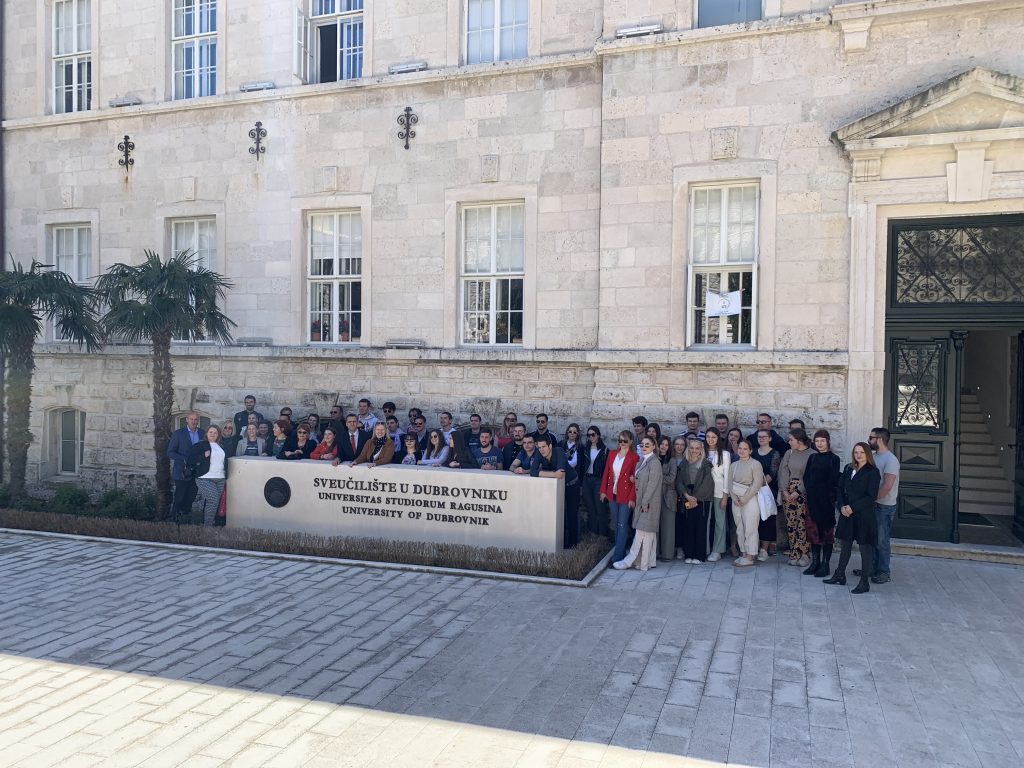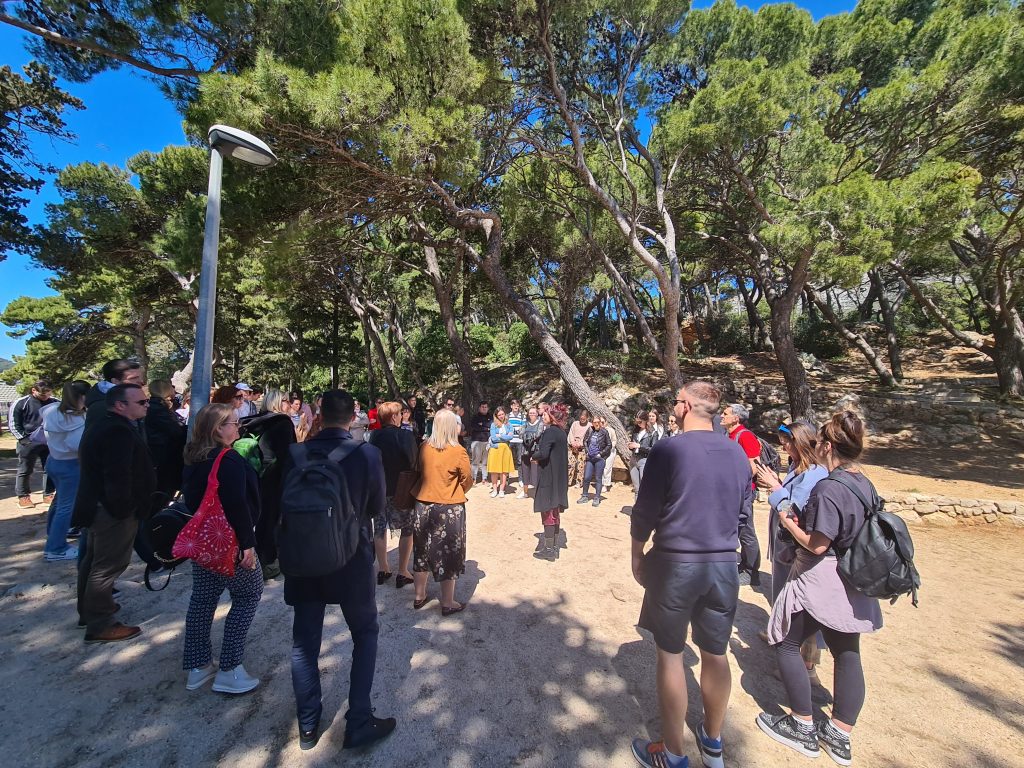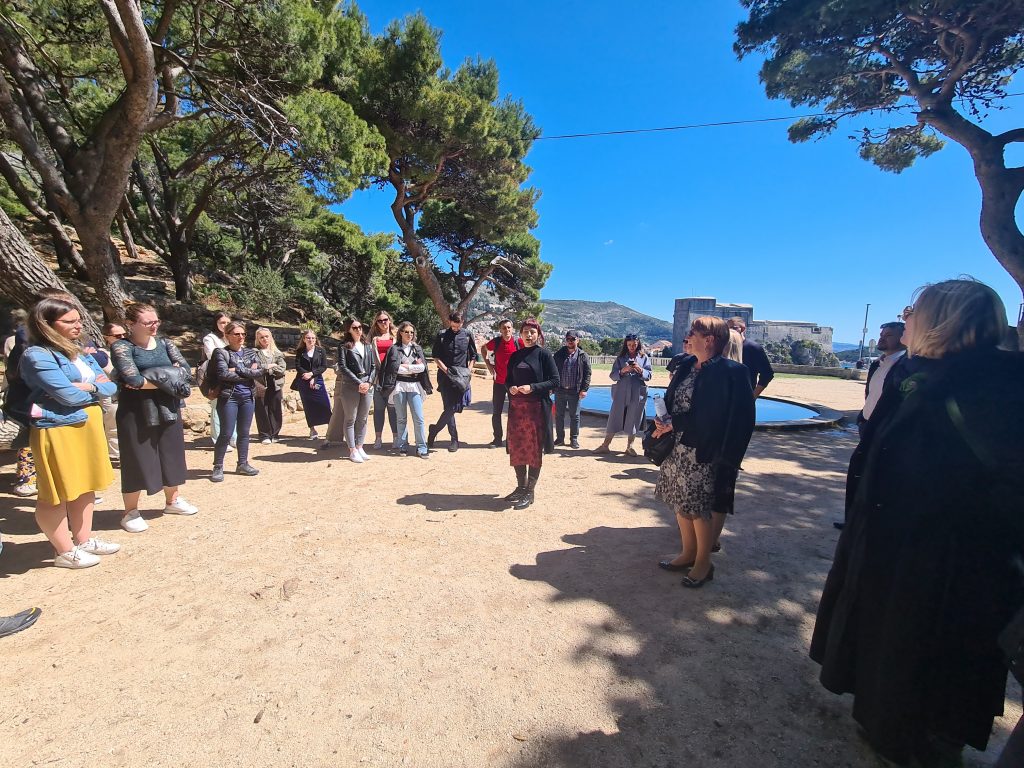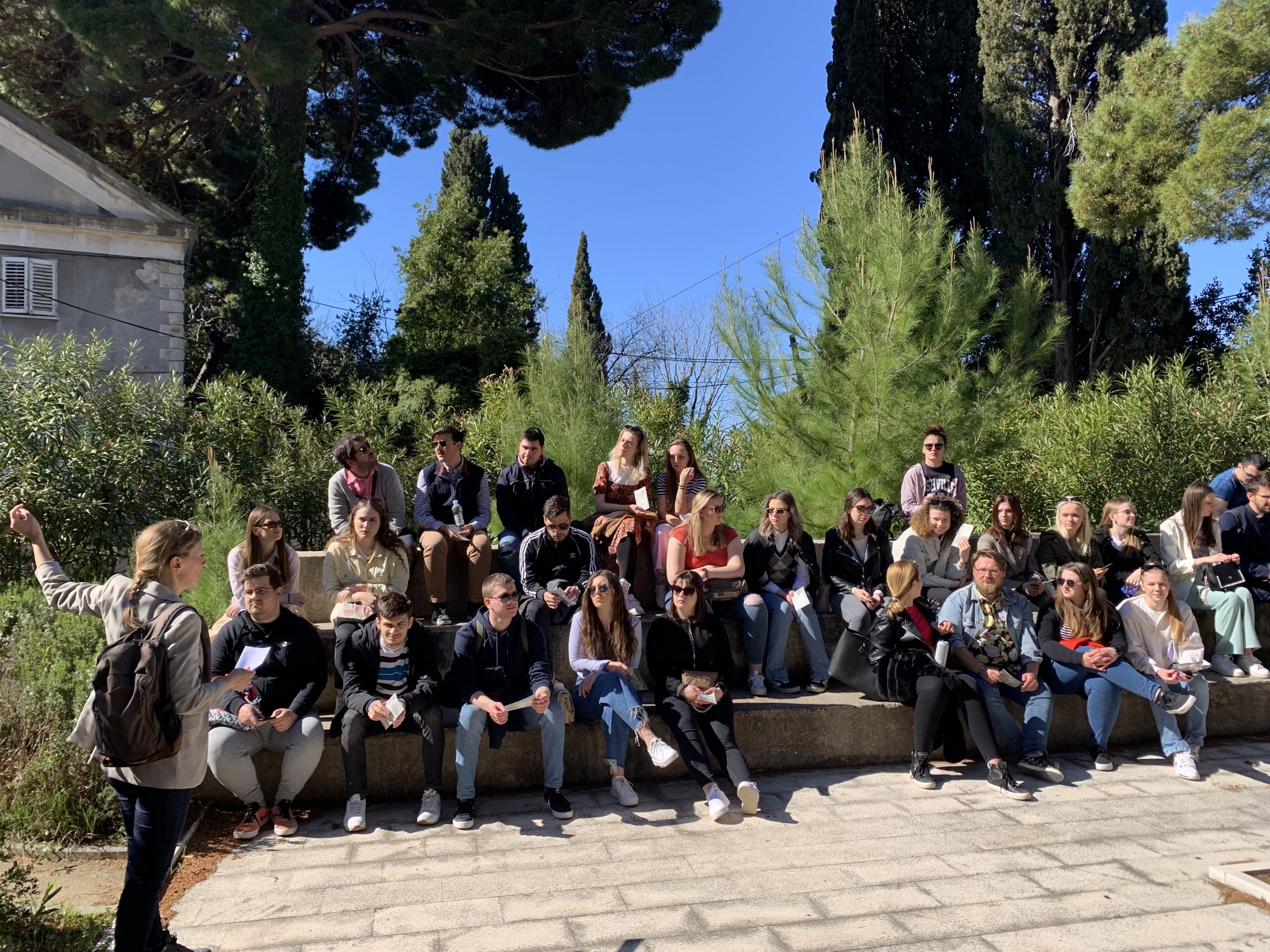
Students and teachers of the study programme History of the Adriatic and the Mediterranean of the University of Dubrovnik were visited by their colleagues from the Catholic University of Croatia (HKS), i.e. by the students of History and Sociology accompanied by their teachers. On this occasion, teacher from HKS Associate Professor Tomislav Anić, PhD, held a lecture entitled ‘Court proceedings against Archbishop Stepinac: media and propaganda of the Yugoslav communist regime’ in the building of the Campus of the University of Dubrovnik.
The head of the undergraduate study programme of History of the Adriatic and the Mediterranean, Associate Professor Marija Gjurašić, PhD, addressed the guests by welcoming them and expressing her wish for a continuation of the good and fruitful mutual cooperation. The Bishop of Dubrovnik Monsignor Roko Glasnović and the Rector of the University of Dubrovnik Professor Nikša Burum, PhD and the Vice Rector for International Relations and Science Associate Professor Marijana Pećarević, PhD attending this lecture.
Associate Professor Tomislav Anić, PhD, in his lecture ‘Court proceedings against Archbishop Stepinac: media and propaganda of the Yugoslav communist regime’ tackled the attitude of the communist government towards Archbishop Stepinac in the times after the end of the World War II, which was marked by persecutions and liquidations of people of dissenting views. The lecturer pointed out that precisely in these circumstances the Yugoslav Communist Party saw in the Catholic Church in Croatia as a great danger preventing the implementation of their agenda. The clash of the Party with Archbishop Stepinac was viewed through contextual and caricatural representation from four newspapers: two political newspapers (Vjesnik and Politika) and two satirical ones (Kerempuh and Jež). Doctor Anić quoted several newspaper articles, especially articles before the arrest of Cardinal Stepinac.
The teachers and students from Dubrovnik then took their guests to Gradac, where student Marija Milovic held a non-typical presentation of Dubrovnik by telling a story full of sorcerers, fortune-tellers, evil creatures and witches under the title ‘Everybody Says She’s a Witch…’. The visit of around fifty guests from the Catholic University of Croatia from Zagreb was preceded by a short meeting of the teachers and students of History from the Faculty of Social Sciences and Humanities in Zagreb.
